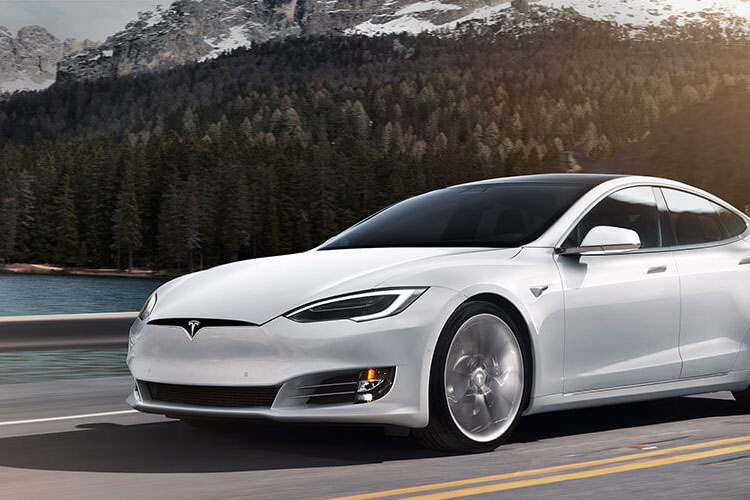2020 is likely to be remembered as The Lost Year for the auto industry. What will drive an auto industry comeback… and when?
Over halfway through 2020 and it is clear that it is a “lost year” for the auto industry.

In recent years, the number of light vehicles sold worldwide has regularly topped 70 million units. For example, in 2018 the last of the pre-Covid-19 years, nearly 79 million cars and trucks were sold. In 2019, it appeared that sales would clear 80 million units but a soft fourth quarter hit as the pandemic (especially in China) and a global slowing of economic performance flattened auto sales and eventually only 75 million units were sold.
In 2019, the global sales total was over $774 billion – a staggering total that could have been even higher if a fourth quarter implosion hadn’t occurred. Europe was the biggest spender at over $367 billion or just over 47% of the market, with North America second at 28% of the total and Asia at 17.5%. But the vise-like hold of the pandemic (particularly in the U.S. and South America), global recession and an industry seeking direction could make it difficult for automakers to put the “lost year” of 2020 behind them.
U.S. Auto Sales Plunge
In the U.S. the auto business is widely considered to be the nation’s largest manufacturing industry accounting for roughly 3% of the domestic national product (DNP). Around 17 million units are sold annually, albeit passenger vehicle sales have slid over the past decade while trucks and other light vehicles have continued to rise.
But the pandemic (and trade wars) have taken its toll on U.S. auto sales. Through the first half, it’s estimated that U.S. auto sales – in unit terms - are off over 23% compared to 2019. The red ink spills over to nearly every automakers’ balance sheet: big names like General Motors - down 21.4%, Fiat Chrysler Automobiles – off 25.8%, Ford – plunging 23.4%. And foreign automakers haven’t fared any better. Honda is down 23.8%, Subaru of America was down 21.3%, while Nissan North America plunged a whopping 39.3%, and Mitsubishi North America was down nearly 33%. A few automakers were able to post sales down less than 20%. Hyundai Motor America was off 18.4%, Kia Motor America was down 13.6% and Mazda was off only 7% in the first half. Tesla Motors was the only automaker to post positive numbers, up 13.2% for the first half.

But the U.S. numbers are only part of the story. Virtually the entire global auto industry is slumping. This pandemic, unlike other past industry disruptions, like the 2008-2009 financial crisis or the 2011 Japan Earthquake and Tsunami, has impacted both supply and demand. This lethal combo has negatively impacted both developed countries and emerging countries alike.
Countries that produce cars have been forced to reduce auto manufacturing both because of the pandemic’s impact on employees and because of the demand from customers. For these reasons, rebuilding both demand and manufacturing capacity will take time.
A case in point is Detroit’s big three automakers GM, Fiat-Chrysler and Ford. All three of the automakers’ U.S. manufacturing plants sat idle for around eight weeks in the spring with pandemic response lockdowns. Recently, the automakers resumed production to address the pent-up demand but a recent spike in Covid-19 cases in Michigan sparked a warning from Michigan Governor Gretchen Whitmer that another lockdown could be forthcoming – and with it a shutdown of the plants should Michigan residents fail to obey the order to wear masks. While all three automakers have done a good job of implementing safety protocols, the new surge in Covid cases could throw a monkey wrench into production plans – a problem the pandemic poses into the foreseeable future.
The U.S Auto Market Complex
Back in 2018 it was widely reported that President Trump in a conversation with French president Emmanuel Macron over trade issues with Europe would carry on with his aggressive trade policies “until no Mercedes models rolled on Fifth Avenue in New York.”
The trouble with Trump’s pronouncement is that Mercedes, VW, or BMW could have been very easily manufactured in the U.S. in a plant in South Carolina, Alabama, Mississippi or Tennessee. The real irony is that some EU automakers have their biggest plants not in the EU, but in the U.S.
While Europe does indeed export more vehicles to the U.S. than the other way around, European automakers have a big stake in U.S. auto production. Going back to the pre-Covid statistics of 2018, EU-owned automakers built around 3 million vehicles annually accounting for 27% of the nation’s production. Even removing the Fiat-Chrysler numbers (Chrysler is considered one of the Big Three) European automakers would account for 15% of the U.S. auto production. And in yet another great irony of the trade wars, 54% of the European automaker manufacturing in the U.S. is destined for export to foreign markets whereas only 23% of the U.S. auto manufacturing is exported.
Of course, it isn’t just European automakers that have established plants in the U.S. Over the last decade Japanese and Korean automakers have invested heavily in building autos in the U.S. effectively shortening their supply chain to the American consumer.
USMCA and Autos
Perhaps no better illustration of the complexities of the auto industry supply chain exists as with the interchange of parts and manufacturing between Canada, the U.S. and Mexico. Under NAFTA Mexico blossomed as an auto parts and manufacturing/assembly center. However, as auto manufacturing has expanded with the addition of Japanese, Korean and European automakers, so has the sourcing.
On July 1, 2020 the new USMCA accords replaced NAFTA (which took effect in 1994) and a new economic regime began for North America’s automakers. Robert Lighthizer, the U.S. Trade Representative, outlined the change for auto manufacturing under the new agreement, “This history-making agreement increases country of origin requirements for auto manufacturing from 62.5% under NAFTA to 75%. This means at least three-quarters of autos and trucks qualifying for tariff benefits will be made in North America. More of those cars and trucks sold in North America will also be built by workers earning at least $16 per hour, reducing the wage disparity that led to the outsourcing of U.S. manufacturing jobs. These provisions are a main reason why the USMCA is expected to create 76,000 new jobs in the U.S. automotive sector alone over the next five years.”

But for all the promise USMCA has for the auto sector, there are some major obstacles to be overcome for the agreement to work – beginning with Mexico’s auto industry. The Mexican economy has been in dire straits for nearly two years and the pandemic has devastated the auto sector which normally accounts for around 3.6% of the GDP. In 2019 Mexico built around 3.75 million vehicles, a decline of over 4% from 2018. But 2020 looks like a disaster in the making with Mexico’s car production off 29.3% year-on-year to 238,946 units in June 2020, following a 93.7% decline in May. It’s expected that Mexico’s auto plants will follow the lead of Detroit and try to ramp up but a deterioration of the Covid-19 situation in Mexico could result in lower production from the plants.
Even should recovery begin in the second half of 2020, there are many questions over the long-term impact of USMCA provisions. For example, with the $16.00 per hour wage (and other sourcing provisions) will some manufacturing move from Mexico back to the U.S.? Maybe and maybe not. For example, Toyota, which built a factory in 2015 in Mexico to produce the Tacoma pickup trucks, could risk incurring a 25% tariff if it doesn’t meet the 40% USMCA’s sourcing provision. Still the cost of relocating the business likely outweighs the risk of staying in Mexico and making the investment pay off. However, the same logic may not apply to GM - the largest foreign automaker in Mexico - who might be willing to shift some production from Mexico to the U.S. (or Canada) if conditions warranted the switch.
When Will Recovery Happen…and Why?
Gary Peters, Senator from Michigan, noted in a CNBC’s “Squawk Box” interview, “The auto industry is such a jobs’ multiplier. It’s such a powerful force in manufacturing and the U.S. economy, the quicker the auto industry can come back, the quicker the entire U.S. economy can come back.” Senator Peters could just have easily amended his comments on the auto industry from the “U.S. economy” to the global economy.

But when will recovery happen for the auto industry? That’s the multi-billion-dollar question being asked in the boardrooms and corner offices of every automaker. Without knowing the full scope of the pandemic, it’s impossible to say when the industry will return to full production and what the shape of demand will look like. Nonetheless there are some early indicators.
Hyundai Motor Group is forecasting that the global vehicle market won’t return to the same levels as 2019 until 2023. According to Hyundai’s estimates (which are measured slightly different than those in most U.S.-based data bases) global commercial and passenger vehicle sales will drop by more than 20 million units in 2020 from the 2019 tally of just over 91 million units. Hyundai also expects the global economy to only slowly emerge from the pandemic rather than the sharp return in some forecasts.
And what will be the spark that ignites the comeback? Many think the spark is going to come from the electric vehicle sector and point out that only Tesla’s production increased in 2020 over 2019 in the year-to-date auto sales comparisons. Certainly, there is considerable investment being made not only in electric autos but in trucks as well. Tesla has its Cybertruck and recently GM announced it was going to release an electric truck next year and has twenty more EVs planned for entry by 2023.
While it is difficult to make projections at this juncture, the pandemic has accelerated change and the auto industry looks poised to be a part of that new look.
.



